Page 2 – Roland 700 series Review Continued from page 1 – HP702, HP704, LX705, LX706, LX708, GP607, GP609. To go back to Page 1 of this review, please click the following link: Page 1 of Roland 700 series Review
This review is continued below from Page 1.
With regard to the 4 acoustic piano sounds in each model, you can modify and edit them to supposedly make them sound better overall from their default factory settings. Roland has a piano sound “custom editing section” called “Piano Designer”

and that feature is built into all of these HP, LX, and GP pianos. This section has a huge amount of functions/parameters which can add more “realism” to the overall piano sound, especially if you are not already happy with the 4 preset acoustic type piano sounds in the piano. The “Piano Designer” section contains a number of piano performance

editing settings along with separate designer functions called “Ambience,” and “My Stage (LX models only) which I’ll talk about a bit later.

Damper Noise, Single Note Tuning, Single Note Volume, and Single Note Character. Those individual piano sound elements are found in real acoustic pianos and the idea here is that you can go into these individual “Piano Designer” elements and edit them to make the default piano sounds more “personal” depending if you think any one of those editing functions can help “improve” the

default acoustic pianos sounds and this goes for all of these models. As an example, the “Cabinet Resonance” and “Soundboard Type” functions have a noticeable impact on the default piano sounds and the way they come out.
 In a real piano there is an actual large wood soundboard located on the inside of an acoustic grand
In a real piano there is an actual large wood soundboard located on the inside of an acoustic grand
piano and on the inside back of an upright acoustic piano
. There are 5 different “virtual soundboards” available on all Roland piano models trying to emulate the sound coming out of real wood piano soundboard sand using that specific editing function can make the Roland pianos sound better or even worse depending on which one
you choose. So that one little editing function can have a huge impact on the piano sound you’re using.

type piano sounds in these models that is can be overwhelming to the point of confusion in my opinion. It would be great if Roland had a bunch of “preset” piano sounds set up by the Roland musicians where those piano sounds were all different but all good that you could quickly choose from. However, from

what I can tell on these many models, you are left on your own to figure it all out for yourself without a large library of pre-done piano and instrument settings.
The Ambience section (which is different in the HP & GP as compared to the LX models) adds a type of echo to the piano sound by simulating the natural echo effects you would hear in various types of rooms and/or buildings, venues if a piano was played in that environment. The Ambience effects are upgraded on the LX models over the HP and GP models by offering 6 specifically designed reverb/ambience called “Pure Acoustic”
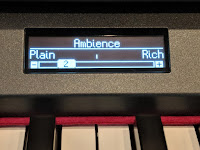
including Studio, Lounge, Concert Hall, Wooden Hall, Stone Hall, and Cathedral with 11 levels of effect depth which you can adjust to further edit the effect to your needs. In the HP & GP models there is only 1 type of ambience effect for the piano sound and you can adjust the depth of that effect to increase or decrease it when you play any of the 4 piano sounds.

properly, all these Roland pianos can sound very artificial and not pleasing to the ear. So when it comes to adding extra special reverb type effects which Roland calls “ambience,” there are many options in these pianos with more of them being offered in the LX models as opposed to the HP & GP models.

want good piano sounds “out of the box” and I find that the majority of people who get these pianos seldom change “effects” or try to modify what they have, that is of course they are very experienced in using these functions and features or don’t care much for the factory default piano settings and want to try to improve upon them with the editing effects. There are some styles of music sound more realistic when you add certain special ambience effects to them and it can be fun to do. But the ambience effects can also make your piano tones sound worse instead of better so you need to be careful with how you use them. Again, if Roland had a bunch of “preset piano setups” with these different ambience effects built in to them so that you could just press one button and make simple but big changes without doing all of these special sound calculations with adding individual effects, depth of effects, type of effects, etc, then I believe this would be a much more practical way of handling it.
If that (Ambience) were not enough…and it definitely could be, Roland has come up with another new feature which also has a noticeably audible effect on the overall piano sound of the LX models only and this feature is called “My Stage.” The “My

Stage” function has 12 pre-set “environments” that can have a huge impact on the overall piano and make it “more realistic” for some people (depending on your ears) and also less realistic depending on which “stage/room environment” you choose. This feature is not the reverb/ambience echo that I was previously talking about. The “My Stage” is a physical modeling technology feature which
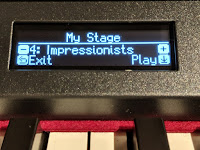
“alters” the 4 preset pianos sounds and makes them sound different…sometimes noticeably better, other times noticeably worse.
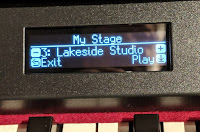
default pianos sounds to life in a more realistic way that is not already part of that original default piano sound. Does that sound confusing to you? It might given how many ways you can add to and change the original 4 default piano sounds in the LX models.

pianos generally play them in their home, church, school, studio, and mostly just want a variety of great piano sounds to play that come out of the box perfectly suited for a variety of music.
The pedaling on these pianos is very good with great response and pedal movement for all 3 types of pedaling including damper-sustain, sostenuto, and soft pedal. The LX708 has an “upgraded” pedaling feel over the other models that more closely recreates the sustain pedal feel on a grand piano as opposed to an upright piano. So for some of you out there who have played or currently play a real grand piano, you may notice the LX708 as having a slightly more realistic pedal feel when a different physical pedal response. The sustain time is very long and natural in all these models in terms of sustain decay time and
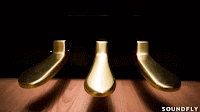
volume decay time when using the pedal. The sustain pedaling includes a feature called continuous detection which gives you a variety of sustain levels from shorter sustain all the way up to full sustain.

use them so Roland has designed those pedals to do other functions and features to allow you to trigger sounds, effects, and other functions within the piano that you would otherwise need to access with a button or through the menu display.
Each model has 320 sampled instruments sounds and 4 physical modeled piano sounds in a sound library as I mentioned earlier. With this huge library of instrument sounds these Roland pianos have just about any sound you can think of including a big variety of woodwinds, reeds, horns, guitars, electric pianos,

strings, choirs, organs, synths, special effects, and more. I will say that just because there are a lot of sounds does not mean they all sound realistic, and this is true for other digital piano brands as well. Some of those sounds are very impressive and some are not. It just depends which one you’re using and also whether they are in a

full mode, layered mode, or split mode.

and it sounds great. I have done this and the results are impressive. It’s a fun feature to have on a digital piano because there are thousands of great GM MIDI song files out there on the internet (some free and some have a cost) and when you use these MIDI songs files to play songs you might like you can also transpose

them up or down to in a different key to get them into your vocal range, or you can adjust tempo to slow down or speed up the song, and you can play along with the song “live” while it is playing.

playing Star Wars, The Beatles, whoever you can think of, their music is likely available as a General MIDI song file…although there will always be exceptions. There are a number of digital pianos that cannot play General MIDI/GS song files and although that should not be a “deal-breaker,” having this capability is a nice bonus particularly if you want to play along to learn songs and have control over tempo and also the key in which it is playing.
The Roland pianos all have the basic fundamental features and functions that other brands and models have including layering 2 sounds together, electronically splitting the keyboard at any point in the 88 keys with two sounds…one for right hand and

the other sound for the left hand. There is a feature that allows two people to play piano at the same time, playing the same notes and hearing the same notes coming out in the same octaves which is called “twin piano.” You can also change touch sensitivity setting on the piano sounds with 100 different levels of editing from very soft to very hard electronic touch curve. You can electronically

transpose/modulate your music to any key up or down in half-steps which is useful and can be very practical, especially if trying to get your music into a better vocal range but you don’t know how to play that song in another key. There is a “twin/duet” mode which can be practical if there are two people (students) learning the same song at
![]()
the same time and they want to practice together or when a teacher and students are practicing at the same time.
 It’s an interesting feature but I seldom see this feature used at home. One of the more useful digital functions on these models is something called
It’s an interesting feature but I seldom see this feature used at home. One of the more useful digital functions on these models is something called
“registrations” which allows you to save up to 36 of your favorite set-ups on the piano.
When you have come up with a favorite setting including layering/mixing two specific sounds together or splitting two specific sounds together, setting up octave changes, transpose changes, and other things you might do to create afavorite sound setting that you’ll use often, rather than try to recreate this setting every time you power up one of these models, you just save it to one the registration memories and lock it in so that you can simply call up that memory to immediately get your

favorite setting you had previously put together. There are 36 digital memory slots to save 36 settings.

you have stored in that function then you can just quickly recall them which really makes playing music simpler and more enjoyable.
The internal speaker audio systems in these pianos are power rated in an unusual way as compared to all other major brands. If you notice in their most expensive top model 5′ deep GP609 baby grand digital piano that sells for approx $12,000, the total power output of the speaker system is only 66 watts according to the specs that Roland provides for this model. Compare that 66 watt total with the Yamaha 4′ deep smaller digital baby grand piano CLP795GP which comes in at a whopping 300 watts of power output according to Yamaha specs. So you would think that the smaller and less expensive Yamaha digital grand piano would
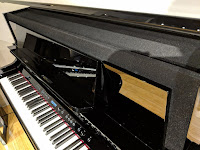
blow away the larger and more expensive Roland digital grand piano…right?
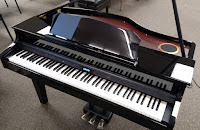
(same as the Yamaha CLP-795GP baby grand). So the Yamaha would be 4 times more powerful than the Roland if you compared only power output rating. But when you compare decibel ratings (dB) then that’s where the loudness comes from.
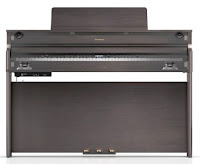
120dB decibel measurement. So when it comes to the “volume” and fullness you hear from a good digital piano, it also has to do with other elements such as the speakers themselves (size, construction, materials used), how those speakers are positioned in the piano, the efficiency of the power amps, and the dB rating.
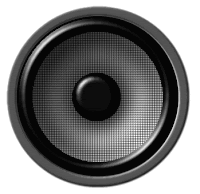
you turn the master volume down lower.
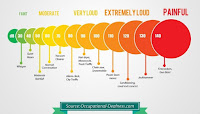 As I mentioned earlier, I am not impressed with the quality and realism of the piano sounds in the
As I mentioned earlier, I am not impressed with the quality and realism of the piano sounds in the
LX series as I heard them and this may have something to do with the internal speaker systems but it could also have to do with how these piano sounds were actually constructed using the physical modeling technology.
However, I do like the sound coming out of the HP704 and GP607 & GP609. Although the entry level model HP702 can get loud enough even with only 28 watts of rated power, the quality and richness of the HP702 just is not there with only 2 small speakers inside and the low 28 watts of power going through just two amplifiers. In my opinion the Korg G1 Air priced at just $1999 internet price has a far better speaker system in it with 80 watts of total p0wer going through 4 speakers and 4 amplifiers which results in a huge, rich piano tone. That’s what I would expect to hear in the HP702 at about $2799 store discount price, but unfortunately you have to go all the way up to the HP704 at about $3750 store discount price before you get a piano sound system with 4 speakers, 4 amps and 60 watts of total power output.As with all major brands of digital pianos these days, Roland has built-in recorder functions in each model including 3-track MIDI song recording and 1-track audio wav file recording. These types of recording features are fairly common among digital piano brands although some brands have 1-track MIDI recording,

2-track MIDI recording on up to 16-track/instrument MIDI recording for those people who want to produce and record more complex compositions. Audio wav file recording is becoming fairly standard in many digital piano brands and models all the way down to digital pianos under $1000.
 The Roland pianos can not only play back these types of recorded song files but they can also play back
The Roland pianos can not only play back these types of recorded song files but they can also play back
audio MP3 song files which is great because the way iTunes and other songs are recorded and saved…in the MP3 format.
Roland pianos however cannot record MP3 song files, they can only play them back with the exception of the GP606 and GP609 digital grand pianos which cannot play back MP3 song files…they can only play back the MIDI files and the audio wav files. This is because the GP piano technology came out before the new HP and LX technology with has that MP3 file playback upgrade. All recorded and playback song files can be loaded onto a USB flash drive for storage and song retrieval for instant playback so you can play along with the recorded songs which is fun to do. I like the control panel round buttons that are fairly flush with the panel and function easily and intuitively overall.All of these Roland digital piano models have Bluetooth wireless connectivity with external devices along with other types of connectivity. The Bluetooth functions include MIDI, audio, and pedal activated page-turning for digital sheet music. Most digital piano brands usually have one

Bluetooth function but not necessarily all of them so Roland is definitely in the lead on those features. Bluetooth audio lets you connect your external audio device (iPad, iPhone, Android, Computer, etc) to the piano so that you can stream audio music, video audio, etc through the piano speaker system wirelessly.
Bluetooth MIDI means you can connect to MIDI interactive apps on your device to use them for piano lessons, triggering new instrument sounds, etc without the need for a USB MIDI cable. The Bluetooth page turning feature allow you to use specific interactive apps which display sheet music that is available through that app
and you can turn the “virtual pages” by pressing a piano pedal with your foot every-time you want the page to turn.

the only one of the major digital piano brands to do it using apps that can be triggered by the Bluetooth page turning technology. With regard to other connectivity, each of these Roland pianos have a number of very useful features accessed from the front left side of the piano mounted underneath the keyboard and these features include left & right 1/4″ audio outputs, stereo min-jack audio input, 2 stereo headphone jacks including one 1/4″ and one mini jack, USB to host external device output, and a USB flash drive input to store your recordings, play MIDI or audio song files, and to save and load registrations. The connectivity features allow you to connect to external devices, sound systems, and also be able to plug in an external audio source and run it through the piano speaker system if you choose to do it that way.
 Another thing that Roland offers on their digital pianos is a proprietary iOS and Android app called Piano Every Day and Piano Designer. Roland did a good job in creating these apps to add more piano playing enjoyment by allowing the user to more easily navigate some of the features on the Roland piano models as well as being able to access musical features that are not built-into the pianos themselves. The piano designer app is one that Roland has had for a number of years and it’s very useful. This app allows you to edit and change the “piano designer” features that are in the piano but you get to do it through this Roland proprietary app on your tablet device which makes it way more intuitive to use especially when using an iPad operating
Another thing that Roland offers on their digital pianos is a proprietary iOS and Android app called Piano Every Day and Piano Designer. Roland did a good job in creating these apps to add more piano playing enjoyment by allowing the user to more easily navigate some of the features on the Roland piano models as well as being able to access musical features that are not built-into the pianos themselves. The piano designer app is one that Roland has had for a number of years and it’s very useful. This app allows you to edit and change the “piano designer” features that are in the piano but you get to do it through this Roland proprietary app on your tablet device which makes it way more intuitive to use especially when using an iPad operating
system to navigate the features quickly and easily. Actually, it is much more enjoyable to edit the piano sound with the parameters in the app rather than editing through the piano itself.
 The Piano Designer app can be interfaced with all Roland piano models regardless of which one you get. Another app is a “controller” app called Piano Partner 2 and it is only available for the HP702, HP704, GP706, and GP609. This app was also available for the prior discontinued models and it lets you select any of the piano instrument sounds from the app in your color touch screen rather than do it from the piano itself. The Piano Every Day app also has
The Piano Designer app can be interfaced with all Roland piano models regardless of which one you get. Another app is a “controller” app called Piano Partner 2 and it is only available for the HP702, HP704, GP706, and GP609. This app was also available for the prior discontinued models and it lets you select any of the piano instrument sounds from the app in your color touch screen rather than do it from the piano itself. The Piano Every Day app also has
features the pianos themselves do not have such as auto accompaniment arrangements to give you a “one man band” feature. This allows you to select any type of rhythm/drum music accompaniment style that is offered in the app and play chords on your Roland piano so that the music is creating a full band or orchestra background based on the chords you’re playing and then you can play a melody along with the accompaniment and have your entire band following your chord progressions and making you sound great and probably much better than

you really are.
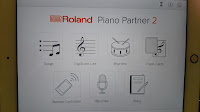
The new “Piano Every Day” app is the latest app for Roland pianos.
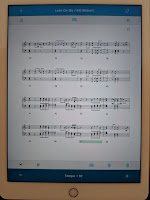
interface with the virtual sheet music in a number of ways which helps with lesson practice, learning to play songs more efficiently, and using other built-in features in the Piano Every Day app.
Now that we’re near the end of this long, detailed review, I will talk about some other aspects of these pianos including cabinet designs and styles offered as well as the control panel layout and operation. There is one thing for sure about these Roland pianos that I really like and that is the furniture cabinet construction, design, appearance, and color finish options. They are without a doubt the most attractive furniture cabinet designs that I have ever seen on Roland home digital pianos and surpass most of the other brands in this way, and I do know a number of piano shoppers looking for that kind of thing when shopping for a new
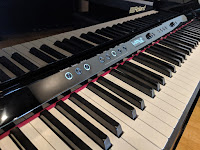
digital piano. The control panel is especially attractive, easy to see, has big round, flush-mount buttons, and are overall quite intuitive to use.
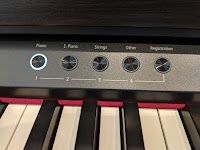
look great and many people appreciate when the piano is functionally intuitive (overall) to use which the Roland pianos are fairly good at doing.

screens.. Plus…Roland has designed the key cover on most (but not all) of these models to have a 2-position key cover so that the first position can cover the control panel without covering the entire keyboard.
impressive exterior design and extra cabinet height with the ability to actually prop open the lid to let the sound come out more towards the player through the opened lid. The other Roland upright vertical models cannot do that.
All of the Roland pianos (with the exception of the LX708) come with an upgraded “duet size” standard height bench that is longer than most of the competition and the bench also has music storage on the inside. It is unusual to find these larger duet size benches that have music storage in them because the other major brands usually have smaller benches with their pianos and some have no music storage on the inside. The LX708 has a special bench that comes with it that is not available on the other models which is a full size “height adjustable” matching bench with music storage inside. This is a really great bench to have but you can only get it on the top upright model LX708.
All Roland Piano models come with an accessory package which includes a set of Roland stereo headphones, Roland music light, and all the pianos have a 10 year parts & labor factory warranty to the original owner along with in-home service which is twice as long as their competitors. Roland is counting on the fact that their pianos are reliable and will last a long time and that’s why they give such a long warranty…because they think they’ll seldom need to repair these pianos. So when it comes to these pianos having good factory support and accessories to make the playing experience even better, Roland has done a great job in that area in my opinion. I have owned a number of Roland digital pianos in past years and they have been overall very reliable, although every digital piano manufacturer has an occasional issue with the electronics at some point, but Roland pianos are generally known to be reliable.
I did want to also highlight the 2 digital “grand” pianos which are the GP607 and GP609. Digital grand piano style cabinets are very popular these days because they generally provide a better, fuller sound that is less “directional” because the sound goes up into the air through speakers within the soundboard area of the piano and then through some bass speakers generally pointing down underneath the piano. Mini and full baby grand piano style cabinets are also very appealing because they have that “professional” piano look to them and many people really like that. The GP607 has been out for awhile and is very popular for Roland coming in a 3 foot deep cabinet available both in polished ebony and also polished white cabinets. The GP609 5′ deep full baby grand
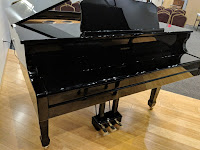
piano is by far the most popular full size digital grand piano out there because it has the largest cabinet for a current model digital piano, sounds impressive through its huge internal speaker system and open lid, and comes in at a relatively low price as compared to other digital grand pianos such as the Yamaha AvantGrand N3X which is a 4′ deep grand piano and is priced at about $17,000 discount store price as opposed to the Roland which comes in at about $12,000 store discount price.
$5,000 less and getting a cabinet that is 1-foot deeper and makes the cabinet larger with a bigger footprint, the Roland is still very popular because it is more affordable and for a lot of people it is more than enough in the way that it sounds and plays. At about $7230 discount price for the 3′ cabinet GP607, it is overpriced in my opinion for a small digital grand piano because you could just buy the new lower priced HP704 for about $3750 store discount price which is 1/2 the price and have the exact same piano with the exception of the cabinet design, control panel differences, app differences, and internal speaker system. So when it comes to the digital “grand piano” design, I think there are much better alternative with regard to what you get and for a lower price in the newer Yamaha and Kawai models.
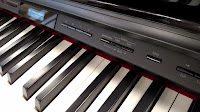 I do like what Roland is offering at the moment but there other digital grand pianos out there such as
I do like what Roland is offering at the moment but there other digital grand pianos out there such as
Yamaha CLP765GP and Kawai DG30 which offer some compelling reasons to consider those models as well and they are quite a bit less money and have beautiful cabinets which many people like.
I think its also good to know that the GP607 and GP609 baby grands are a “generation” behind the other Roland pianos when it comes to the importnt key action, control panel, user interface, display screen technology, and overall design of the buttons, knobs, etc. The latest models HP702, HP704, LX705, LX706, and LX708 have a new operating system, new user interface, new and better OLED display screen, new sleeker and more intuitive control panel with round flush mounted light-up buttons instead of the much smaller and plainer looking rectangular buttons, along with an overall more contemporary design and layout. So even though the GP607 and GP609 can be satisfying digital pianos to look at and play, their interface/control panel technology is already outdated as compared to these newer Roland models. I guess that’s the “price you pay” for advancement in technology…wait long enough and the pianos will change and get even better.In the final analysis, it is not the cabinet, connectivity, apps, or “bells & whistles” that should be the reasons you purchase a new digital piano, but it should be “how does the piano sound and feel when you play it?” Does it excite you and make you want to play often and inspire you to play better and become even more accomplished? Those are the reasons in my opinion that someone should purchase a particular digital piano…because it “musically moves you” and also if you can afford to pay for it. Since a piano is an “investment” and many people own them for years and years, spending a bit more money than you were planning on spending up

front can yield better musical results which can justify the extra expenditure.
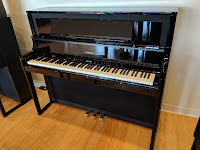
features within the piano. However, Roland does not provide, to my knowledge, any practical way to learn and understand how to use those many designer features in a way that makes sense so that you actually know what you are doing when you use them.
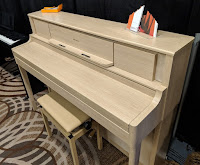
want to use them, and how the piano will sound when you start changing all the parameters and functions, that is a difficult task for most people as far as I am concerned because I have personally used all those features and changed the settings in a variety of ways and the out-come can be bad or good depending on what you do. But my big response to all that would be…”why should anyone have to do all that to get the piano to sound good?
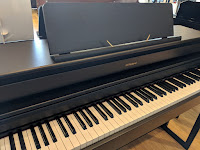
like Roland. The Roland piano people would call those piano sounds in their LX piano models…”Sound Engines.” The LX models have 2 distinct “sound engines called American and European with one variation of each of those 2 sound engines whereas the HP & GP pianos have only one “sound engine” with 3 variations. For me, the 3 pianos in this new piano line that I like best are the HP704, GP607 3′ mini grand, and GP609 5′ baby grand and this is because they have the “other” piano sound chip in them that don’t have all the sound issues I have previously mentioned including having the issue with the “stretch tuning” note

If you want to go back to Page 1 of this review please click the following link: Page 1 of Roland Review
If you want more info on new digital pianos and LOWER PRICES than internet discounts, please email me at tim@azpianowholesale.com or call direct at 602-571-1864.





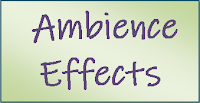

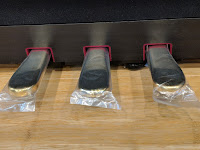

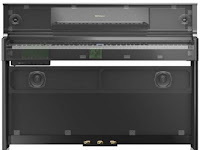

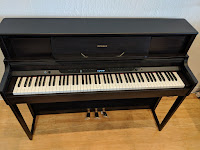

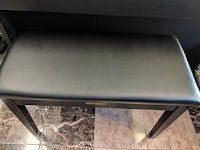


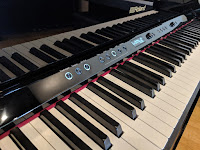
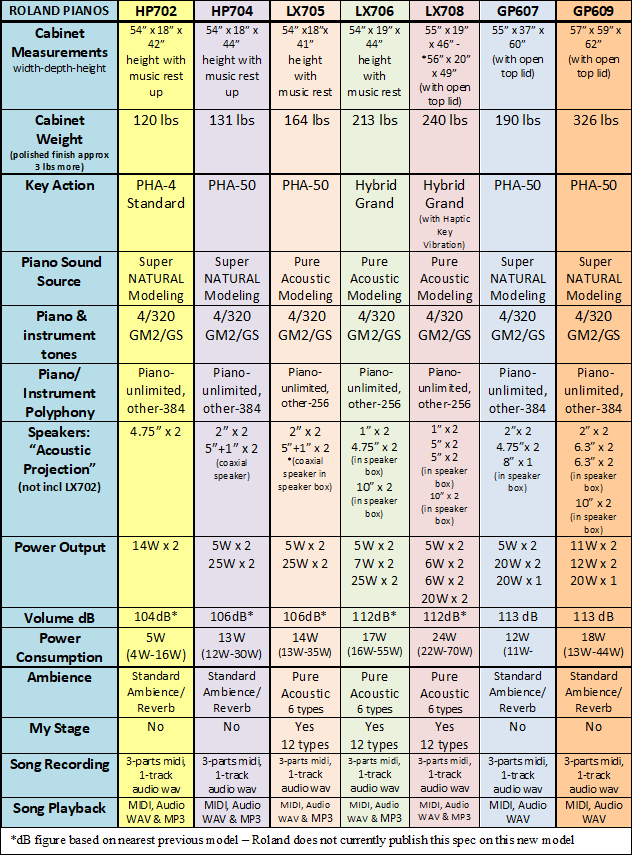











This review is so in depth and heaps helpful when deciding which Roland piano to get. I have to thank you for sharing your knowledge.
Tim,
Thanks for your in-depth review and comparison of Roland pianos. I learned a lot from your experiences through your review and eventually decided to order a Roland HP704 for my daughter. Due to the pandemic Roland is not able to deliver pianos to The Netherlands and I could not find the white cabinet anywhere in stock. I hope to get it delivered in a few months.
Best regards,
Ali
Amsterdam, The Netherlands